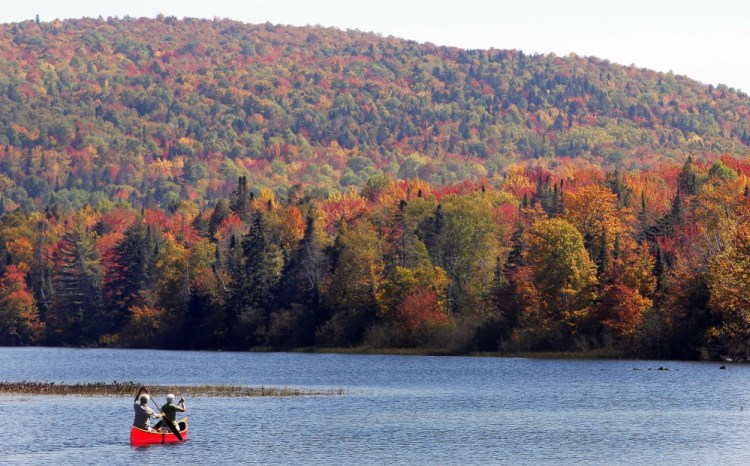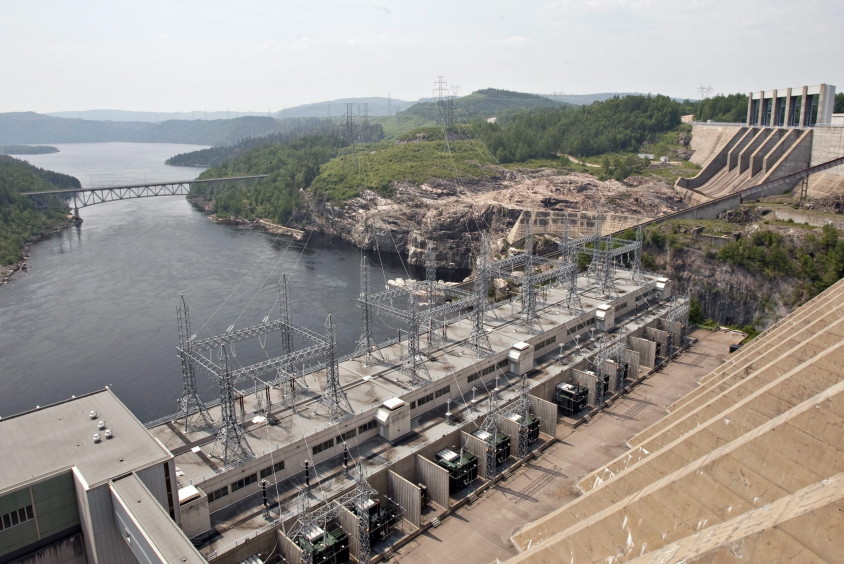CONCORD, N.H. — Plenty of raw electricity sloshes around in Quebec’s rivers and reservoirs, promising relief for U.S. northeasterners, who pay the nation’s highest power costs. But getting those electrons to smartphones and air conditioners in Boston, Hartford and New York City is another matter entirely.
In review or under construction are five large-scale hydropower proposals that could pump thousands of megawatts into the Northeast and ease prices as supply increases. But critics worry that transmission lines will despoil the natural beauty of places like New Hampshire’s White Mountains, and that overreliance on it will stymie efforts to trim consumption and develop renewable energy sources closer to home.
“Our view is that there is a role for Canadian hydropower in the New England power grid,” said Tom Irwin, vice president and director of Conservation Law Foundation-New Hampshire, an environmental advocate. “It’s had a role, we expect it will continue to play a role and we expect that role will increase. But we think that to the extent it increases, that it be done in a thoughtful way and in a way that doesn’t undermine the development of renewable resources at the local level.”
The Energy Information Administration in June forecast New Englanders would pay a tops-in-the-nation 20.2 cents per kilowatt-hour in the third quarter of this year, almost 7 cents higher than the national average. New York and New Jersey are expected to pay 16.5 cents per kilowatt-hour.
The six New England governors say reining in the costs is a high priority and in April announced they would work together on solutions. Massachusetts Gov. Charlie Baker in July sought to require utilities to work with the state to pursue long-term contracts to bring hydropower into the state as a way to reduce greenhouse gas emissions and help ratepayers.
In 2014, 1.6 percent of the electricity purchased in the U.S. came from Canada, 60 percent of it pouring into New England and New York, according to the EIA. In those markets, Canadian imports made up 12 to 16 percent of the retail electricity sales, enough to significantly move the needle on the region’s power costs. Five large-scale hydro proposals currently in review or under construction could pump thousands more megawatts into the Northeast, putting more downward pressure on prices as supply increases.
So many factors go into a consumer’s bill — including supply, demand, usage and the prices of other fuels at any moment in time — that it’s hard to pinpoint the effect more Canadian hydropower will have on an individual.
Canada is the world’s third-largest generator of hydropower, behind China and Brazil, and still has plenty of untapped capacity. Canadian generators added 5,000 megawatts of hydropower over the past 10 years — enough to power 5 million homes — and expect to match that in the coming decade, said Jacob Irving, president of the Canadian Hydropower Association. The country could potentially double its existing capacity, he said.
“For the U.S. and its desire to have a cleaner and more reliable electricity system, when they look north, I think they can do so with confidence,” he said.
Developing that electricity system locally has proven a challenge. It’s hard enough to get buy-in to string power lines or pipelines through the densely populated, educated and politically savvy Northeast. Building a dam or putting up a wind farm stirs even deeper antipathy.
In New England, that Canadian hydropower essentially comes from one provider: Hydro-Quebec. An EIA report shows that in 2014, it exported more than 28 percent of the Canadian power that made it to the U.S., nearly double the next largest exporter, the Manitoba Hydro-Electric Board.
Hydro-Quebec’s 62 generation facilities — all but one are hydro plants — can produce 36,500 megawatts, enough to power 36.5 million homes. By comparison, the operator of New England’s power grid, ISO-New England, puts total generating capacity in the six states at 31,000 megawatts. Hydro-Quebec has been a player in the U.S. market for about four decades, and spokesman Gary Sutherland said sending more power south is a strategic goal.
Hydro-Quebec is working with Eversource Energy, based in Hartford, Connecticut, on the $1.4 billion Northern Pass plan to send 1,200 megawatts of electricity on mostly overhead power lines through New Hampshire to southern New England markets including Boston, Hartford and Providence, Rhode Island. It’s one of a handful of current proposals to expand Canadian hydropower in the region: They include:
• Maine Green Line, a 300-mile cable underground and under the ocean to the Boston area.
• Northeast Energy Link, a 230-mile underground line from Orrington, Maine, to Tewksbury, Massachusetts.
• New England Clean Power, 1,000 megawatts, under Lake Champlain and across Vermont.
• Champlain Hudson Power Express, 1,000 megawatts, 330 miles mostly under Lake Champlain and New York’s Hudson River to New York City.
Building Northern Pass alone could save the region $250 million to $300 million a year in wholesale energy costs each year, Eversource spokeswoman Lauren Collins said.
Critics have assailed the project for what they say will be irreparable damage to New Hampshire’s scenic beauty, the environment and property values along the route, compared with other proposals that largely call for buried lines.
“Other transmission developers are not just suggesting it, but are actively doing it, in ways that don’t have the same negative impacts that Northern Pass would,” said Jack Savage, a spokesman for the Society for the Protection of new Hampshire Forests.
Burying the lines in a rugged environment like New Hampshire’s mountains would raise the cost to $3 billion or $4 billion from $1.4 billion, an increase that would be passed on to ratepayers, Bill Quinlan, Eversource’s president of New Hampshire electric operations, said last year.
After the Energy Department last week released a draft environmental impact statement on Northern Pass, Eversource said it was reviewing alternate routes.
Aside from the question of routes, critics worry that a vast supply of power from Canada will lull states into a false sense of security and that they’ll let efficiency efforts lapse or shirk requirements to find more renewable sources closer to home.
Irwin, of the Conservation Law Foundation, doesn’t want the Canadian hydropower to count toward those renewable goals or chip away at efforts to use less power.
“The more progress we can make on energy efficiency, the less people will pay,” he said.
But Irving, of the Canadian Hydropower Association, rejects the idea that more Canadian hydro will thwart progress on renewables in the U.S. Instead, he said, hydropower can be started and stopped quickly, making it a better partner for renewables like solar and wind, which require a reliable backup. That, he said, could encourage more renewable projects in the states, not fewer.
Even advocates of hydropower confess it’s not “carbon-free” because building the reservoirs to power the turbines creates a short-term spike in greenhouse gases when trees are removed. But over the long term, hydropower produces vastly less carbon than fossil fuels.
Copy the Story LinkSend questions/comments to the editors.




Success. Please wait for the page to reload. If the page does not reload within 5 seconds, please refresh the page.
Enter your email and password to access comments.
Hi, to comment on stories you must . This profile is in addition to your subscription and website login.
Already have a commenting profile? .
Invalid username/password.
Please check your email to confirm and complete your registration.
Only subscribers are eligible to post comments. Please subscribe or login first for digital access. Here’s why.
Use the form below to reset your password. When you've submitted your account email, we will send an email with a reset code.